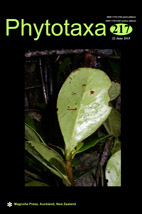Abstract
Lake Hövsgöl is an ancient lake situated in north-central Mongolia at the southern end of the Baikal Rift Zone. Throughout its limnological history, Lake Hövsgöl has developed an extraordinary diversity in different groups of organisms, such as fish and invertebrates. However, the one group that presumably holds the largest taxonomic diversity in the lake—the diatoms—has been largely overlooked.
This study presents a detailed taxonomic overview of the genus Diploneis from Lake Hövsgöl as well as a few localities from the neighboring Arkhangai province. A total of 25 taxa were identified, five of which are new and potentially endemic. Alongside the endemic species, this study confirms the presence of several taxa recently described from other Mongolian lakes (e.g., Diploneis linearielliptica, Diploneis aff. heteromorphiforma and Diploneis cf. eximia), presumably peculiar for this mid-Asian region. A relatively high number of widespread species were identified in Lake Hövsgöl, commonly reported from Europe and elsewhere. Interestingly, a population of Diploneis praeclara that is morphologically closely related to populations from Neogene fossil deposits in Romania was also observed in Lake Hövsgöl. Detailed LM and SEM observations are provided, together with species descriptions and comparisons to morphologically related species.
Greater knowledge of the genus Diploneis opens and guides the way towards better and more comprehensive approaches of uncovering biological diversity and biogeographical patterns on the Eurasian continent and among the ancient lakes.

